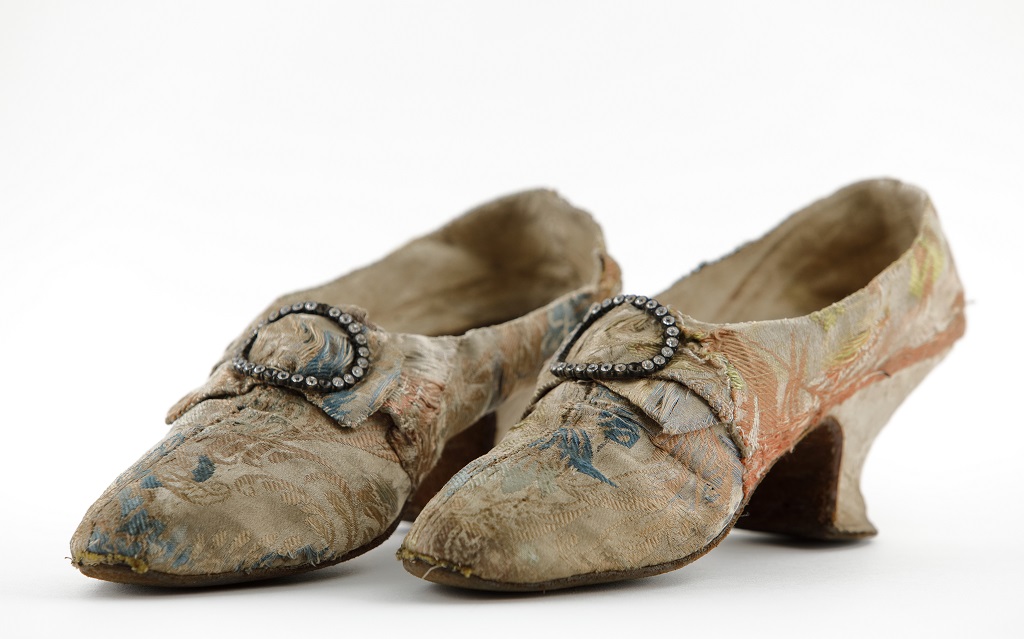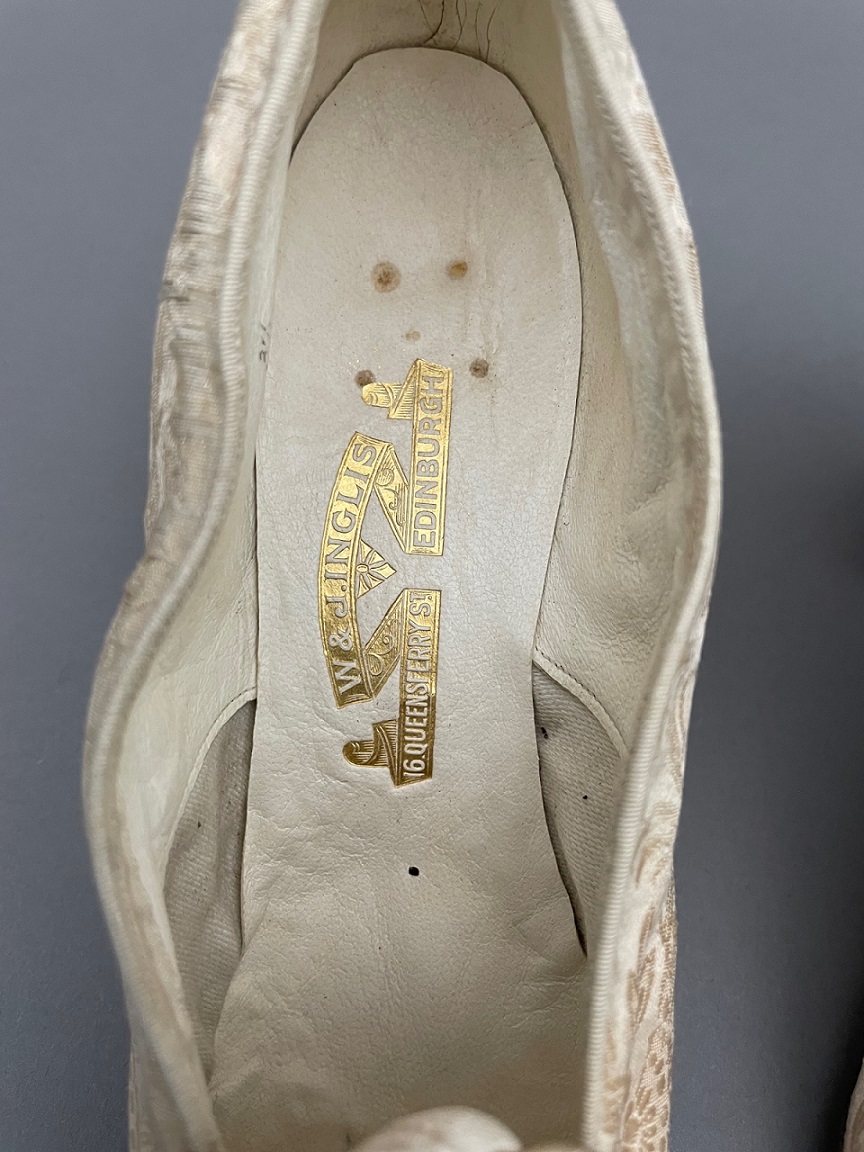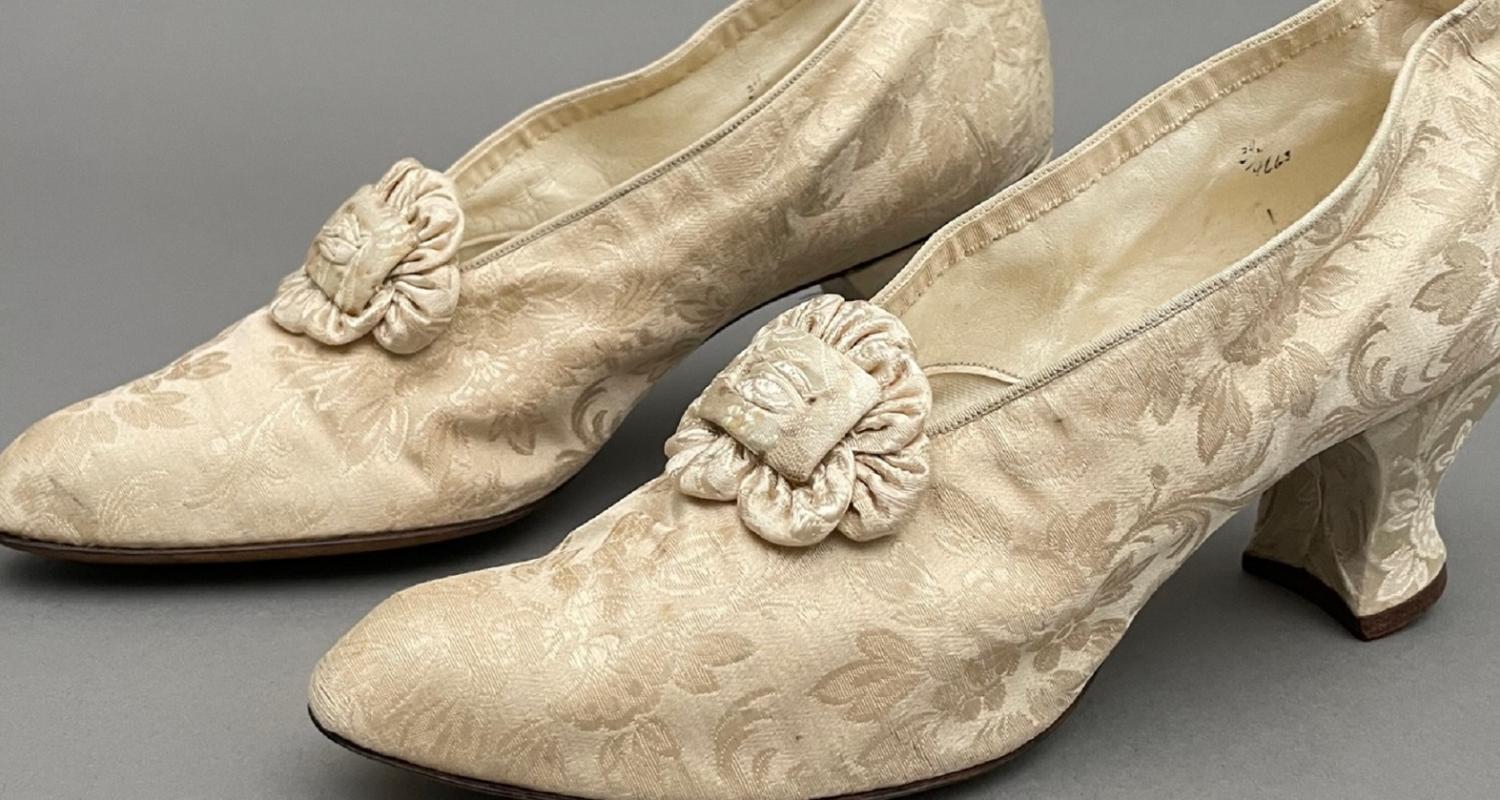We’re continuing our series of blogs to mark Edinburgh 900. In this blog, History Curator Vicky Garrington reveals a new addition to the dress history collection that was sold in Edinburgh’s bustling retail centre.
These beautiful cream silk wedding shoes were worn by a member of the donor’s family for her wedding in 1927. They were sold by the company W & J Inglis of Queensferry Street, Edinburgh. They are an interesting addition to the Museums & Galleries Edinburgh dress history collection as they show how shoe styles for formal wear evolve slowly, often harking back to popular styles from previous centuries.

Style throwbacks
If we compare the 1920s wedding shoes to these 1750s shoes in our collection, there are a lot of similarities. The use of silk fabric is similar, as is the choice of a Louis heel. First popularised by Louis XIV of France in the 17th century, Louis heels are curvaceous, with a flared base that makes them comfortable to wear. They continue to be used by shoes designers today. The 1750s heels have a more exaggerated curve than the 1920s heels, making the heel sit more fully under the ball of the foot. This was a fashion that ebbed and flowed over the 17th and subsequent centuries. It gave the illusion of a small foot, which has been considered attractive across cultures and generations, but if the flare was too extreme, it caused the shoes to feel unstable. There’s no point looking glamorous if you’re going to stumble at the same time!

The 1750s shoes have latchets (cross-over pieces at the front) that are fixed with a buckle holding paste gems. The 1920s shoes have a silk rosette instead, but the shape and style of the rosette nods to the use of buckles.
Heeled shoes for women fell out of favour in the late 18th century, making way for nearly 100 years of flat slippers, but the late Victorian period saw the return of elegant heels. By the 1920s, there were many different styles of heeled shoe available, many far removed from the 18th century style. So, why do these wedding shoes hark back to a style over 200 years old?
One idea to explore is that formal-wear trends tend to move more slowly than trends in everyday wear, as traditional rules of appropriate dress often apply. Formal-wear is also more lavish and therefore expensive, so there is less appetite for a fast turn-over of fashions. For an event like a wedding, some people prefer to adopt a ‘classic’ style seen in previous generations of wedding portraiture, to avoid being immortalised in one fashion moment that could pass out of style. Painted portraiture also plays a role, with elegant women captured by artists such as Sir Joshua Reynolds providing inspiration across the generations.

Wedding shopping
W & J Inglis appear in Edinburgh Post Office Directories as shoe retailers over a number of years. Their location on Queensferry Street, just off the west end of Princes Street, would have positioned them near the large department stores of Edinburgh’s main shopping street. It would have been a handy location for those browsing for all the necessary clothes and accessories for a wedding.
We are delighted to have these 1920s wedding shoes in our collection. Not only do they represent an Edinburgh retailer that is new to our collections, but they also illustrate perfectly the way fashion cycles work, with inspiration being drawn from the past to create today’s fashionable looks.
Edinburgh 900
2024 marks the 900th anniversary of King David I introducing a new system of local government into Scotland, and making Edinburgh a royal burgh. To mark this anniversary, we're exploring the different ways the city museums' collections can tell Edinburgh's story. We'll be following the 10 themes of the programme, so keep an eye out for new blogs as we discover more. You can hear more about some of the items in these blogs in the Edinburgh 900 lecture series at the City Art Centre.
